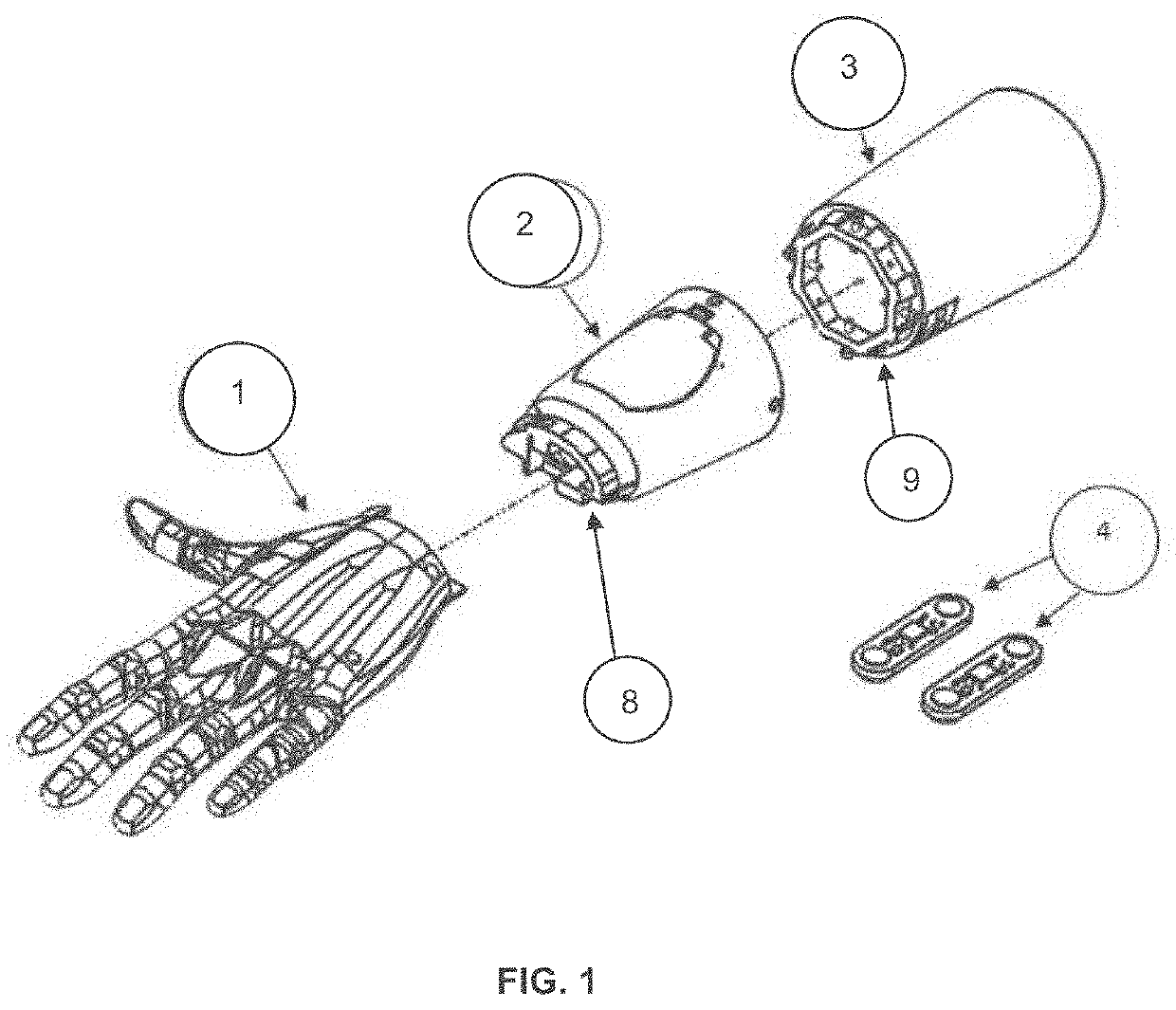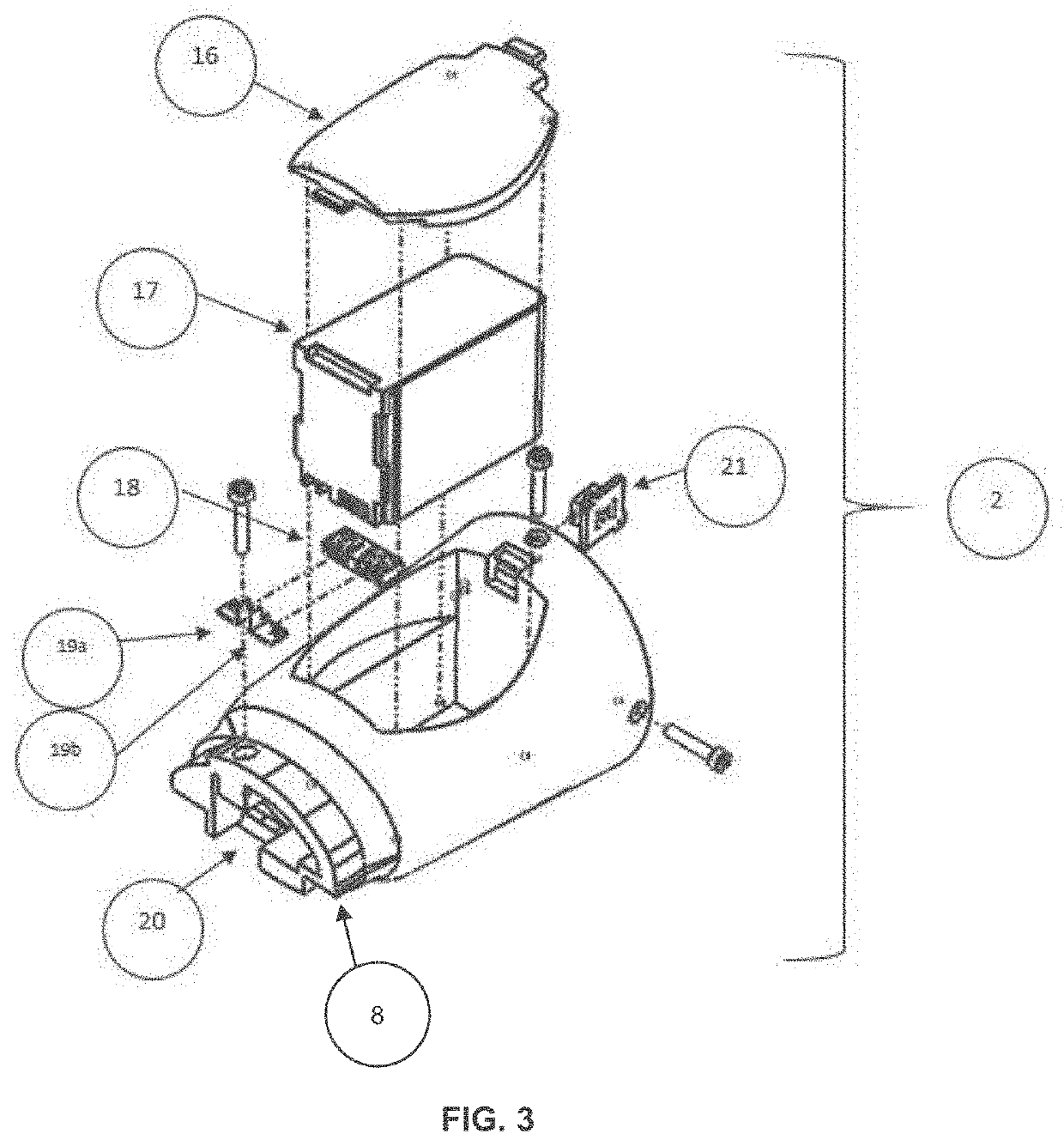Modular prosthetic arm system
a modular, prosthetic arm technology, applied in the field of prosthesis, can solve the problems of limited functions, prosthesis must be redesigned, and design can take weeks or even months to develop
- Summary
- Abstract
- Description
- Claims
- Application Information
AI Technical Summary
Benefits of technology
Problems solved by technology
Method used
Image
Examples
Embodiment Construction
[0030]With reference to FIG. 1, you can see the different parts / modules of the prosthesis with their respective myoelectric sensors (1, 2, 3, 4). The arm prosthesis is a device for people who lack the limb at the transradial level, either due to congenital causes or amputations. The prosthesis consists of three main modules (1, 2, 3), the first module called hand palm (1) is responsible for storing the drive system, the control board and the mechanism responsible for the movement of the fingers, the second module called Socket-Chassis (2) has the function of being the coupling between the Hand palm and the Socket-stump (3), as well as the storage of the battery, and the third module called Socket-stump (3) which is responsible for attaching the prosthesis to the end user, which are connected to each other by means of assembly guides (8,9) which allow a firm and secure assembly.
[0031]In relation to FIG. 2, the hand palm module (1) comprises distal fingers (5) and proximal fingers (6)...
PUM
 Login to View More
Login to View More Abstract
Description
Claims
Application Information
 Login to View More
Login to View More - R&D
- Intellectual Property
- Life Sciences
- Materials
- Tech Scout
- Unparalleled Data Quality
- Higher Quality Content
- 60% Fewer Hallucinations
Browse by: Latest US Patents, China's latest patents, Technical Efficacy Thesaurus, Application Domain, Technology Topic, Popular Technical Reports.
© 2025 PatSnap. All rights reserved.Legal|Privacy policy|Modern Slavery Act Transparency Statement|Sitemap|About US| Contact US: help@patsnap.com



